2020 State of the Mountains Address
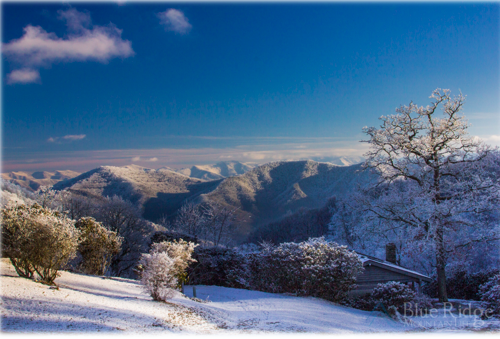 Our world has become very small over the past year.
Our world has become very small over the past year.
For many of us, our home has been our world. We’ve probably hunkered down at home for days, maybe weeks or months, before venturing out for food and other necessities. Perhaps we’ve been permitted to telecommute or teach remotely. Regardless of the scenario, we’ve definitely spent more time at home with our spouses and children than we’ve ever had.
Not surprisingly, with all this time at home, we’ve noticed our home and grounds need a bit of work: painting, landscaping, plumbing issues, and the “honey-do” list becoming longer and longer!
Have you noticed? Handyman services, painters, landscapers are solidly booked. And building supply stores are in short supply as we tackle this deferred maintenance.
Our situation at home is really a microcosm of a growing worldwide realization: the deferred maintenance of our planet is long overdue.
The combined calamities of climate change, invasive plants and pests, polluted waterways, indeed the combined threats to our entire ecosystem can feel overwhelming.
Despite these challenges, this is the simple reason we should not relinquish hope: human beings created this impending ecological disaster and it will be human beings who will help us to avert it and restore our environment. Recent research noted a 30% drop in carbon emissions and over 20% reduction in air pollution since the start of the pandemic. This is a guide to what’s possible to achieve even in a short period of time.
As dubious as it may seem, 2020 may later be described by conservationists as the year our vision was restored to 20/20. Significant and lasting steps were conceived to practically grapple with the issues that threaten us.
Here at Friends of the Blue Ridge Mountains, in coordination with our conservation partners throughout Virginia’s Piedmont region, our contribution to preserve and protect our invaluable natural resources is being the primary steward of the Blue Ridge Mountains, from the Short Hills to Front Royal, the gateway to Shenandoah National Park.
Starting with this annual statement, Friends will every year deliver a “State of the Mountains” assessment, informing the public as well as county and state officials throughout our service area of both the challenges the mountains face and accomplishments towards meeting those challenges.
Friends of the Blue Ridge Mountains was formed 13 years ago on two principals.
 First – our home is an area of unique assets both natural and manmade. Over the centuries geology and climate have combined to create beautiful vistas with a unique and diverse mix of plants, trees and animals found in few other places in the world. At the same time, our ancestors – stretching back long before written history — have been an active part of this environment taking advantage of its bounty and shaping it.
First – our home is an area of unique assets both natural and manmade. Over the centuries geology and climate have combined to create beautiful vistas with a unique and diverse mix of plants, trees and animals found in few other places in the world. At the same time, our ancestors – stretching back long before written history — have been an active part of this environment taking advantage of its bounty and shaping it.
As every school child learns America’s earliest history takes place against the backdrop of these mountains. In 1755 George Washington marched through present day Leesburg with Virginia militiamen on their way to attack Fort Duquesne. President Madison removed the treasures of the White House to Leesburg to shelter them from the British. Much of our nation’s most violent struggle was fought in the valleys and along the roads that today are our neighborhoods, shopping centers and parks.
Second — our unique area is dynamic. Over the centuries it has changed and will continue to do so for the foreseeable future.
The trees that clean our air and water are different than the trees through which Commander Mosby and his raiders rode during the Civil War. Gone are the mountain forests characterized by large stands of mature trees included chestnut, hemlock, and many varieties of oak to be replaced by sweetgum, elms, and yellow poplar. Our beautiful but winding, rutty and muddy farm roads have been straightened, widened, and paved. Our economy is no longer farm based or slave based.
In 2020 a huge segment of our population earns a very good living sitting at a desk – increasingly sitting at a desk at home – doing things that generations past could not have imagined.
The job of Friends has been and remains to help people appreciate and enjoy our unique environment and at the same time to help manage the inevitable forces of change so that future generations can continue to enjoy the best our mountains have to offer.
With that in mind we must ask what are the most pressing forces of change? Where must Friends focus our attention today, tomorrow and over the coming years to be most effective?
We see five major forces that are going to greatly impact our lives in the coming decade or two. Our task is to manage those forces and those changes in a way that preserves and enhances what is best about living in the Blue Ridge. Our aim is not to stop change but to manage change.
Climate
Of course, the most formidable force of change is the warming climate. Inevitable. Average temperatures will rise and continue to do so for the rest of our lives. Storms will get more sever and more frequent. The birds, the fauna, and the animals will change.
Our Blue Ridge Mountains will see more forest fires and associated flooding and erosion. While climate change is inevitable there are things FBRM and our partners in conservation are doing to help reduce its worst impacts. We are planting trees.
Trees are the most efficient consumers of carbon dioxide. As they grow leaves pull carbon dioxide and water from the air converting them to sugars that feed the tree. As a by-product oxygen is produced and released back to the air.
One acre of trees pulls about six tons of carbon dioxide from the atmosphere each year producing about 520 tons of oxygen – each year.
Trees are natural sponges, collecting and filtering rainfall and releasing it slowly into streams and rivers, and are the most effective land cover for maintenance of water quality.
This year Friends made a financial contribution to The Nature Conservancy’s program to plant Longleaf pine restoring the forests that the earliest European settlers found in what is now Virginia. Friends also matched on a dollar-for-dollar basis contributions that our members made to the program.
Trees are not the only plants important to helping our area thrive in the changing climate. The clean-cut, manicured lawns that are the staple of our neighborhoods are not environmentally friendly. Between the chemicals that we use to make them grow and the fuel we use to cut them when they do grow lawns are a significant source of greenhouse gasses in our atmosphere and pollutants in our streams, rivers, and the Bay.
While recognizing that our collective addiction to short green grass is not going away quickly, Friends has and will continue to take steps to educate our readers to the problems with lawn grasses. There are attractive, less damaging landscaping options.
 Conservation landscaping is the practice of modifying the plant, ground cover, and flora around a home or business in a way that incorporates environmentally sensitive design, low impact development, non-invasive native plants, and integrated pest management.
Conservation landscaping is the practice of modifying the plant, ground cover, and flora around a home or business in a way that incorporates environmentally sensitive design, low impact development, non-invasive native plants, and integrated pest management.
Practices like rain gardens, beds of native grasses and wildflowers, and planting native trees and shrubs are great ways to benefit pollinators, improve water quality, and sequester carbon while still meeting neighbors’ expectations of what the area around a home or business should look like.
Several states including Pennsylvania, Minnesota, New Hampshire, and Massachusetts providing financial assistance to encourage/help landowners find alternatives to the traditional lawn.
In the coming year Friends will look closely at these programs with an eye towards encouraging their adoption in our area.
The Road Network
 What happens with our road network over the coming years is going to have more of a direct impact on the Blue Ridge than almost any other public policy.
What happens with our road network over the coming years is going to have more of a direct impact on the Blue Ridge than almost any other public policy.
Your access to shopping, school, work, entertainment is determined by the nature and condition of the roads you drive more than the number of actual miles between those places. There is constant pressure to straighten, widen, and smooth roads to make it easier and faster for you to get where you want to go.
The more roads are straightened, widened, and smoothed the more people will move to areas that were previously inconveniently accessible — in other words the valleys, farms, villages, open fields and rolling slopes of the mountains. The more people that move to previously inconveniently accessible areas the more traffic will be generated and the cycle will continue.
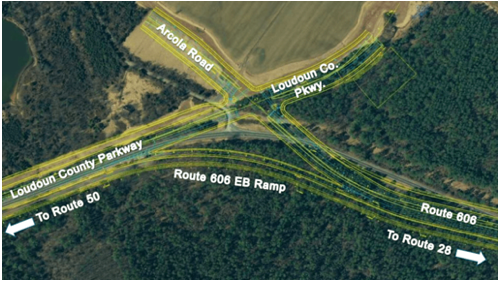 While Friends cannot and does not oppose all road improvement projects, we approach them with a healthy skepticism and the knowledge that road improvements create traffic they do not eliminate traffic.
While Friends cannot and does not oppose all road improvement projects, we approach them with a healthy skepticism and the knowledge that road improvements create traffic they do not eliminate traffic.
In Loudoun County there is a unique obligation to monitor road improvements. Loudoun County has more miles of unpaved roads than any other Virginia County and many people in Loudoun like it that way. On June 18, 2020, the Virginia Department of Historic Resources declared the road network officially eligible for listing on the Virginia Landmarks Register and the National Register of Historic Places.
Such a designation will not by itself protect the roads from being paved and improved but it should give all concerned pause before paving historically significant roads.
Within a few minutes’ drive of the most sophisticated data centers in the world one can ride a horse, bike, walk or even ride in a horse drawn carriage on a quiet farm lane that looks and sounds much as it did in 1800.
The Zoning Rewrite
Loudoun County’s zoning rewrite process is a third factor that is going to have an impact on our Mountain environment for many years to come.
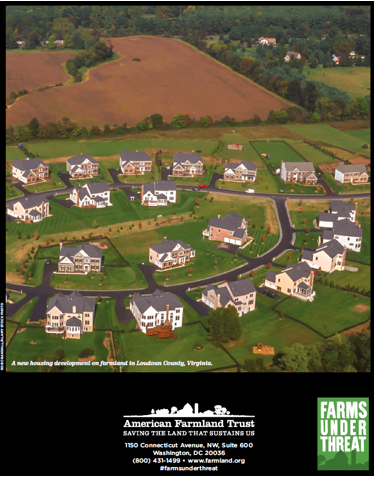 The victories for agriculture, the environment, and the mountains that Friends and other groups won during Loudoun’s Comprehensive Planning process can be lost in the County’s zoning rewrite process.
The victories for agriculture, the environment, and the mountains that Friends and other groups won during Loudoun’s Comprehensive Planning process can be lost in the County’s zoning rewrite process.
We and many other groups including Loudoun County Preservation and Conservation Coalition (LCPCC), Piedmont Environmental Council (PEC), Save Rural Loudoun (SRL), and the Farm Bureau devoted countless hours and great effort to making sure that the Plan protected the irreplaceable agricultural and environmental assets of Western Loudoun not to mention the rural lifestyle. Those efforts bore fruit. The Plan adopted by the Board of Supervisors on June 20, 2019 include many statements about protecting rural/agricultural Western Loudoun.
However, as important as the Plan is for establishing County policy, the real battle for protecting Western Loudoun and our mountains is just beginning.
The Plan is not law and has little direct impact on day-to-day decisions County staff make in reviewing development applications. The policies of the Plan must be written into regulations – particularly the zoning ordinance and the Facilities Standards Manual — before they impact day-to-day decisions.
In September 2019, the BOS authorized the rewrite of the County zoning ordinance for the specific purpose of implementing the Comprehensive Plan. This rewrite will determine the shape and scope of development in Western Loudoun and the entire County for the next 20 to 30 years.
It is not safe to assume that the agricultural/rural/environmental protection policies in the Plan will make it into the specific language of the new zoning ordinance.
We and other organizations that worked so diligently to shape the Plan are staying involved in the rewrite process. We prepared and distributed two long Happenings articles to our members describing the current zoning and the rewrite process. We monitor every meeting of the newly formed Zoning Ordinance Committee.
The timeline for the rewrite process has two more periods of public input – January to March 2021 and Summer 2021. We will alert our members of issues that merit their attention and work with like minded organizations to make sure that the zoning ordinance fulfills the promise of the Comprehensive Plan.
There are two areas of immediate concern in the zoning rewrite.
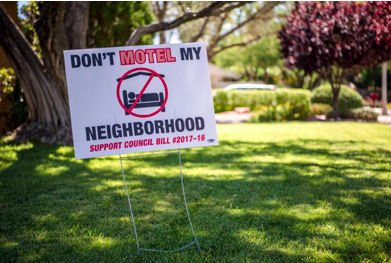 One is the proposal to allow so called whole house rentals in western Loudoun – districts AR-1, AR – 2 and A-10 for those of you who appreciate specifics. Currently this is not a permitted use. We see the proposal as opening the door to widespread motels disguised as houses – think Ocean City or Myrtle Beach.
One is the proposal to allow so called whole house rentals in western Loudoun – districts AR-1, AR – 2 and A-10 for those of you who appreciate specifics. Currently this is not a permitted use. We see the proposal as opening the door to widespread motels disguised as houses – think Ocean City or Myrtle Beach.
This is not our vision of the mountains and we doubt if it is yours.
The second is the question of how best to protect the irreplaceable prime agricultural soil of the western county. While there is widespread consensus that the current zoning does not provide adequate protection, the specifics of how to do this are complicated, controversial, and technically challenging.
Friends will keep our members informed on these and all other zoning issues threatening our mountains. When necessary we will work to focus public attention on the most critical questions.
Industrial development
Another major force shaping the future of our beautiful mountains can be summed up with one word – Rockwool. As you know a Danish Company – Rockwool International – is in the process of building a large manufacturing plant in Ranson, West Virginia – just 20 miles north of Bear’s Den.
Without going into the specifics — which all of you probably know as well as I – the air and water pollution threats of this plant to the Blue Ridge and surrounding area are massive.
FBRM has joined with many other groups including the citizens of Ranson and Jefferson County in efforts to stop the construction. As of the moment construction has been halted and a Danish regulatory body is reviewing the situation.
While the threats of the Rockwool plant are our immediate focus, we are equally concerned about rockwool type situations arising all over. Air and water do not respect political boundaries. The most sophisticated, aggressive local environmental regulations cannot protect the Blue Ridge from threats of extractive industries hundreds of miles away.
In the coming years we will continue to work with other environmental and conservation minded organizations throughout the region and the country to identify threatening development.
One other area of concern that we will focus on in the coming year is enforcement. The rewritten zoning code, conservation easements, the proposed Transfer Development Rights (TDR), the historic designation of Loudoun’s unpaved roads and all of the other tools to help us protect and enjoy the Blue Ridge are only effective if enforced.
Sometimes enforcement in Loudoun County appears to be spotty. Spotty enforcement threatens the anticipated benefits of the programs it is also grossly unfair to the vast majority that accept and live by the rules of the program.
The zoning code in particular is a concern. The primary enforcement mechanism is public complaints about violations. Neighbors complaining about neighbors. Not a formula for harmonious community life. Friends will continue to work with other organizations to try to find ways to strengthen enforcement policies and programs in Loudoun and all other counties in our region.
Final Remarks
On this day, in the year 2020, I am excited to announce to the public and our conservation partners a bold initiative to further our commitment to protect and preserve the Blue Ridge.
For years we have discussed the possibility of creating a conservation corridor from Harper’s Ferry to Front Royal.
Our conservation partners have endorsed this concept in the past.
Today I ask our conservation partners to join us in establishing a County-wide designation of the Blue Ridge Mountains as a local and national historic treasure.
To practically accomplish this goal, Friends has retained the services of Jane Covington, an experienced heritage advocate in our region, to guide us through the process.
Jane, we spoke recently about how much stronger our case would be if we act as a coalition instead of going it alone. Please explain…
My name is Jane Covington. I am a local preservationist and live in the village of Bloomfield, at the foot of the Blue Ridge. Our view is of the slopes of the Blue Ridge and we so appreciate the work of the Friends to protect what we love.
A month ago, Peter Weeks approached me about putting Lella Russell Smith’s vision of protecting the Blue Ridge into action. Lella’s vision is enormous. When she wrote her white paper in November of 2005, she was ahead of her time, but today accomplishing her vision is critical considering the enormous development pressures.
Peter described a vision of a ‘conservation corridor’ encompassing five counties and stretching from Harper’s Ferry to Front Royal along the spine of the Blue Ridge. Peter asked me which of the many conservation tools would be the best to accomplish this vision and who are the conservation partners who would be willing to work with the ‘Friends’ to accomplish this mission. My role working with the Friends will be to answer Peter’s questions of the best way to proceed.
Peter’s timing is perfect as there are several other efforts already underway. The National Park Service is in the process of completing an inventory of the assets within this region and the Blue Ridge Conservation Alliance is also working to shape their own goals. It is an opportune time to harness these parallel efforts to accomplish a single vision.
Undertaking something like this takes time, patience, unwavering focus, and enormous community input. I am honored to be a small part and look forward to working with all you in the coming months.
Conclusion
Deteriorating climate, expanding road networks, zoning changes, industrial development and pollution, questionable enforcement – all big forces trying to change the beautiful, bountiful Blue Ridge environment we all cherish.

And yet JOY.
The joy of being able to live here. On the most stressful day we can each walk or drive or ride a bike or horse through areas of great beauty; across ground upon which much of our nation’s history has taken place.
We as true Friends of the Blue Ridge Mountains struggle daily to shape the powerful forces of change in ways that preserve and even enhance what is best.
We do not — we cannot — stand in the way of change. We can hope to shape it.



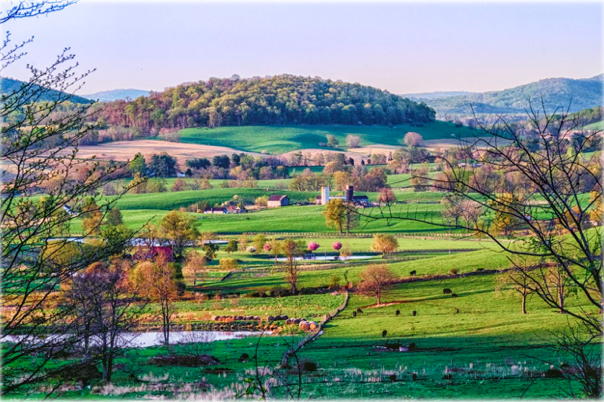
Leave a Reply
Your email is safe with us.